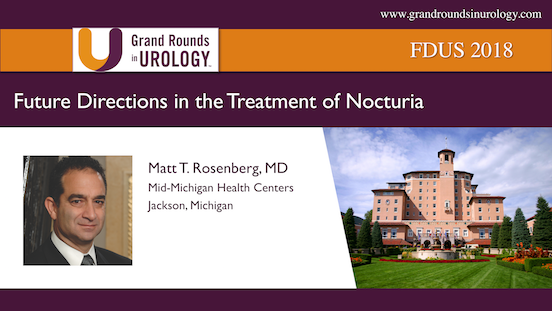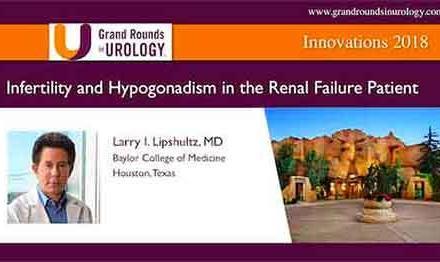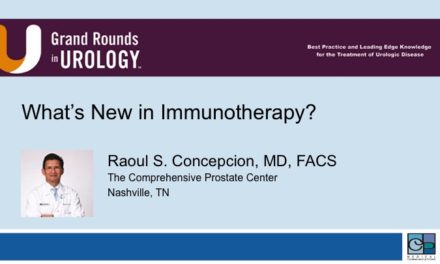Session 3:
Next Generation General Urology and Men’s Health
2018 Consensus Statements
- Guidelines among involved societies need to be reconciled to identify which men should be treated, as well as how and when they should be monitored.
Both the American Urological Association (AUA) guidelines and Endocrine Society (Endo) guidelines state that hypogonadal men should be treated with testosterone only when they have a low serum testosterone (T) and hypogonadal symptoms.AUA: “The clinical diagnosis of testosterone deficiency is only made when patients have low total testosterone levels combined with symptoms and/or signs”Endo: “We recommend diagnosing hypogonadism in men with symptoms and signs of testosterone deficiency and unequivocally and consistently low serum total testosterone and/or free testosterone concentrations (when indicated)”Our recommended monitoring schedule is every 6-12 months with testosterone, PSA, and hematocrit levels.The AUA guidelines should also state that, “Clinicians should inform patients of the absence of evidence linking testosterone therapy to the development of prostate cancer.”The Endo guidelines slightly differ, stating, “Many older men harbor small foci of subclinical cancer in their prostate; we do not know whether T replacement might cause these subclinical cancers to grow and become clinically overt.”We find the AUA guidelines to be more acceptable when it comes to prostate cancer and testosterone, so the AUA statement on prostate cancer and testosterone should be followed. - We need to verify the safety of T replacement in men with lower urinary tract symptom (LUTS) due to benign prostatic hyperplasia (BPH).The largest meta-analysis assessing T and LUTS/BPH is by DeLay and Kohler (2016). This meta-analysis demonstrates that every study observing this topic either found no increase in LUTS or BPH symptoms or no effect at all after testosterone replacement therapy (TRT). Thus, there is no convincing data to support that T causes worsening on BPH/LUTS symptoms. The AUA guidelines have no statement on BPH and T. The Endo guidelines state the following: “T therapy does not worsen lower urinary tract symptoms (LUTS) in men who do not have severe LUTS prior to treatment,” as well as, “We do not know whether T worsens LUTS in men who have severe LUTS at baseline, because such men have been excluded from T trials.”TRT has not been shown to worsen LUTS in men with mild to moderate BPH. More studies are needed to assess the effects of TRT in men with severe LUTS.
- We need to establish the safety of T replacement in men on active surveillance for small volume prostate cancer.There are only three retrospective studies in the literature, so we assert the following consensus statement: Patients with testosterone deficiency and on Active Surveillance for small volume prostate cancer should be informed that there is inadequate evidence to quantify the risk-benefit ratio of testosterone therapy.
- We need to establish the safety of T replacement in men with treated prostate cancer.When it comes to giving men T after prostate cancer treatment (i.e., radical prostatectomy), both AUA and Endo guidelines are similar in that they state more studies need to be done, and this should be done with caution.AUA: “Patients with testosterone deficiency and a history of prostate cancer should be informed that there is inadequate evidence to quantify the risk-benefit ratio of testosterone therapy.”Endo: “Although some clinicians have suggested considering patients with a history of organ-confined prostate cancer for T replacement on an individualized basis—if they have undergone radical prostatectomy, have undetectable PSA, and no detectable residual disease 2 or more years after surgery —the lack of data from RCTs precludes a general recommendation.”For this topic, we suggest adopting the AUA guidelines with the addition that retrospective and case controlled studies thus far have not demonstrated increased prostate cancer recurrence when giving men testosterone after prostate cancer therapy.
- Physicians must choose the best method of T administration, out of injection, gels, or creams. The best method is patient specific. These factors are as follows:
- Cost – Insurance now often dictates what we can prescribe.
- Compliance – If patients cannot remember to put on a gel every day, we move to injections or pellets.
- Concentration – If one gel or formulation is not able to achieve T levels in the normal range, we switch to another formulation.
- Convenience – Some patients prefer long acting as opposed to short acting gels.
As a final consideration, the risk of transference is an important safety concern to include in deciding the best method of administering testosterone. If the patient has a young child or pregnant wife, the patient should not receive gels to avoid risk of transference.
- We believe the treatment of nocturia should follow currently published BPH guidelines for workup. Consideration of newer formulation when contraindications to antidiuretic hormone (ADH) is eliminated and other interventions are not optimal.
- The guidelines for T replacement in men with hypogonadism, with or without concomitant LUTS due to BPH and/or small volume prostate cancer, need to clarify the frequency of monitoring of T and PSA levels. Studies to determine the safety of T replacement in hypogonadal men with LUTS due to BPH and who are known to harbor small volume prostate cancer that is under active surveillance are necessary.
Five-Year Predictions:
1. Testosterone will be used to help improve BPH/LUTS symptoms as it is a strong anti-inflammatory in the prostate.
2. A large, randomized, placebo-controlled study will be conducted to assess the risk of prostate cancer following TRT.
3. TRT will be more frequently used in patients with metastatic prostate cancer as a form of therapy.
Session Moderators
Mohit Khera, MD, MBA, MPH
Baylor College of Medicine
Houston, TX
ABOUT THE AUTHOR
Mohit Khera, MD, MBA, MPH, is the Professor of Urology and Director of the Laboratory for Andrology Research at the McNair Medical Institute at Baylor College of Medicine. He is also the Medical Director of the Executive Health Program at Baylor. Dr. Khera earned his undergraduate degree at Vanderbilt University. He subsequently earned his Masters in Business Administration and his Masters in Public Health from Boston University. He received his MD from The University of Texas Medical School at San Antonio and completed his residency training in the Scott Department of Urology at Baylor College of Medicine. He then went on to complete a one-year Fellowship in Male Reproductive Medicine and Surgery with Dr. Larry I. Lipshultz, also at Baylor.
Dr. Khera specializes in male infertility, male and female sexual dysfunction, and declining testosterone levels in aging men. Dr. Khera’s research focuses on the efficacy of botulinum toxin type A in treating Peyronie’s disease, as well as genetic and epigenetic studies on post-finasteride syndrome patients and testosterone replacement therapy.
Dr. Khera is a widely published writer. He has co-authored numerous book chapters, including those for the acclaimed Campbell-Walsh Urology textbook, for Clinical Gynecology, and for the fourth edition of Infertility in the Male. He also co-edited the third edition of the popular book Urology and the Primary Care Practitioner. In 2014, he published his second book Recoupling: A Couple’s 4 Step Guide to Greater Intimacy and Better Sex. Dr. Khera has published over 90 articles in scientific journals and has given numerous lectures throughout the world on testosterone replacement therapy and sexual dysfunction. He is a member of the Sexual Medicine Society of North America, the American Urological Association, and the American Medical Association, among others.









